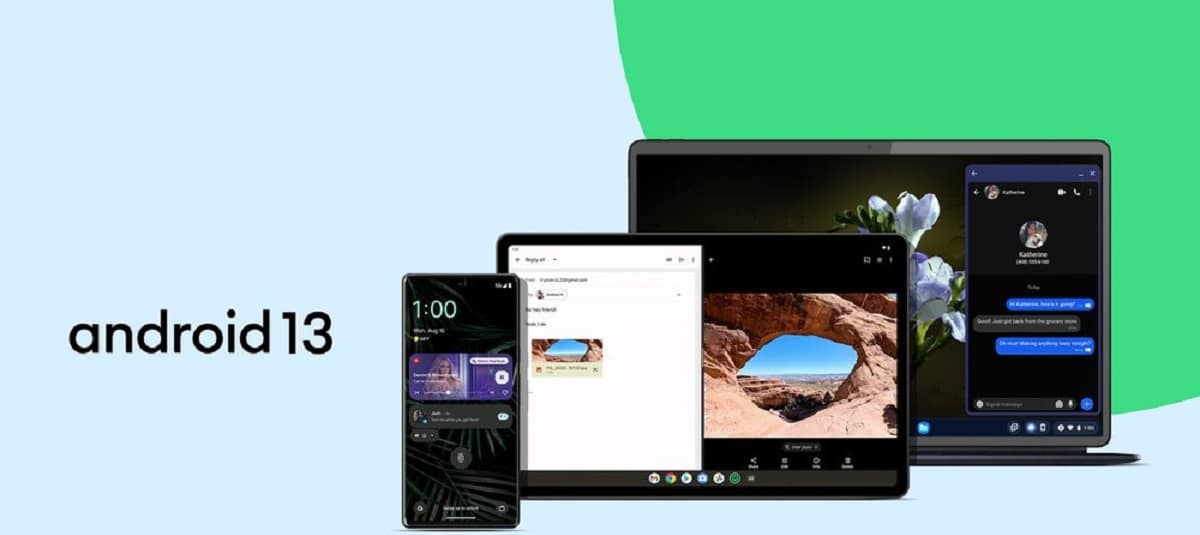
Google announced the launch of the new version of Android 13, in which a set of previously prepared options for the interface color design is proposed, which allows to slightly adjust the colors within the selected color scheme.
It is also highlighted that the possibility of adapting the background of the icons of any application is provided to the color scheme of the theme or the color of the background image, while in the music playback management interface, the use of images of the covers of the discs being played is provided as a background.
Another novelty that stands out in this new version is that the ability to link individual language settings to applications that differ from the language settings selected in the system has been added.
It is also highlighted that the experience was improved on devices with large screens such as tablets, Chromebooks, and smartphones with foldable screens. For large screens, the layout of the notification dropdown, home screen, and system lock screen has been optimized to use all available screen space.
In the block that appears with a swipe gesture from top to bottom, on large screens, separation into different columns of quick settings and the list of notifications is provided. Added support for a two-pane mode in the configurator, in which configuration sections are now constantly visible on large screens.
We can also find in Android 13 that the compatibility modes were improved for applications, since in this new version the implementation of the taskbar is proposed, which displays the icons of running apps at the bottom of the screen, allowing you to quickly switch between programs and supports transferring apps via drag-and-drop interface to various areas of multi-window mode (split screen ), dividing the screen into parts to work with several applications simultaneously.
For some devices, like Pixel 6, added full virtualization support Which allows running environments with other operating systems. Virtualization is implemented on the basis of the KVM hypervisor and the crosvm (VVM, Virtual Machine Manager) tools. pKVM (Protected KVM) mode is optionally available and provides tighter isolation from environments using virtualization extensions to the AArch64 architecture. The platform plans to use virtualization to improve protection from the execution of third-party system code, such as private executables and DRM components.
Implemented a new interface for selecting photos and videos, which allows the app to access only selected images and videos and block access to other files. Previously, a similar interface was implemented for documents. It is possible to work with both local files and data hosted on cloud storage.
In addition to this, in Android 13 added a request for permissions to show notifications by applications, Without prior permission to display notifications, the app will block notifications from being sent. For prebuilt apps designed for use with earlier versions of Android, the system will grant permissions on behalf of the user.
Decreased the number of applications required access to user location information. For example, apps that perform wireless network scanning operations no longer require location-related permissions.
Added new Wi-Fi permission type which allows apps that scan for wireless networks and connect to hotspots to access a subset of the Wi-Fi management APIs, excluding location-based calling (previously, apps that connect to Wi-Fi were given and location information accessed).
A more efficient garbage collector is implemented in ART based on the userfaultfd Linux kernel API, which allows drivers to be created to access unallocated memory pages (page faults) in user space. The new garbage collector provides a fixed overhead for each loaded object, consumes less memory, and results in approximately 10% less compiled code. Using the new garbage collector also allows you to extend battery life, get rid of crashes during garbage collection, and protect applications from force termination when there is not enough system memory.
ART significantly improved performance to switch to native code and vice versa: JNI calls now run up to 2,5 times faster. The runtime reference processing code has been changed to work in non-blocking mode to reduce crashes. yes
Support for Bluetooth LE Audio (Low Energy) technology has been added to reduce power consumption when transmitting high-quality audio streams via Bluetooth. Unlike classic Bluetooth, the new technology also allows you to switch between different usage modes to achieve the best balance between quality and power consumption.
Finally If you are interested in knowing more about it, you can check the details In the following link.